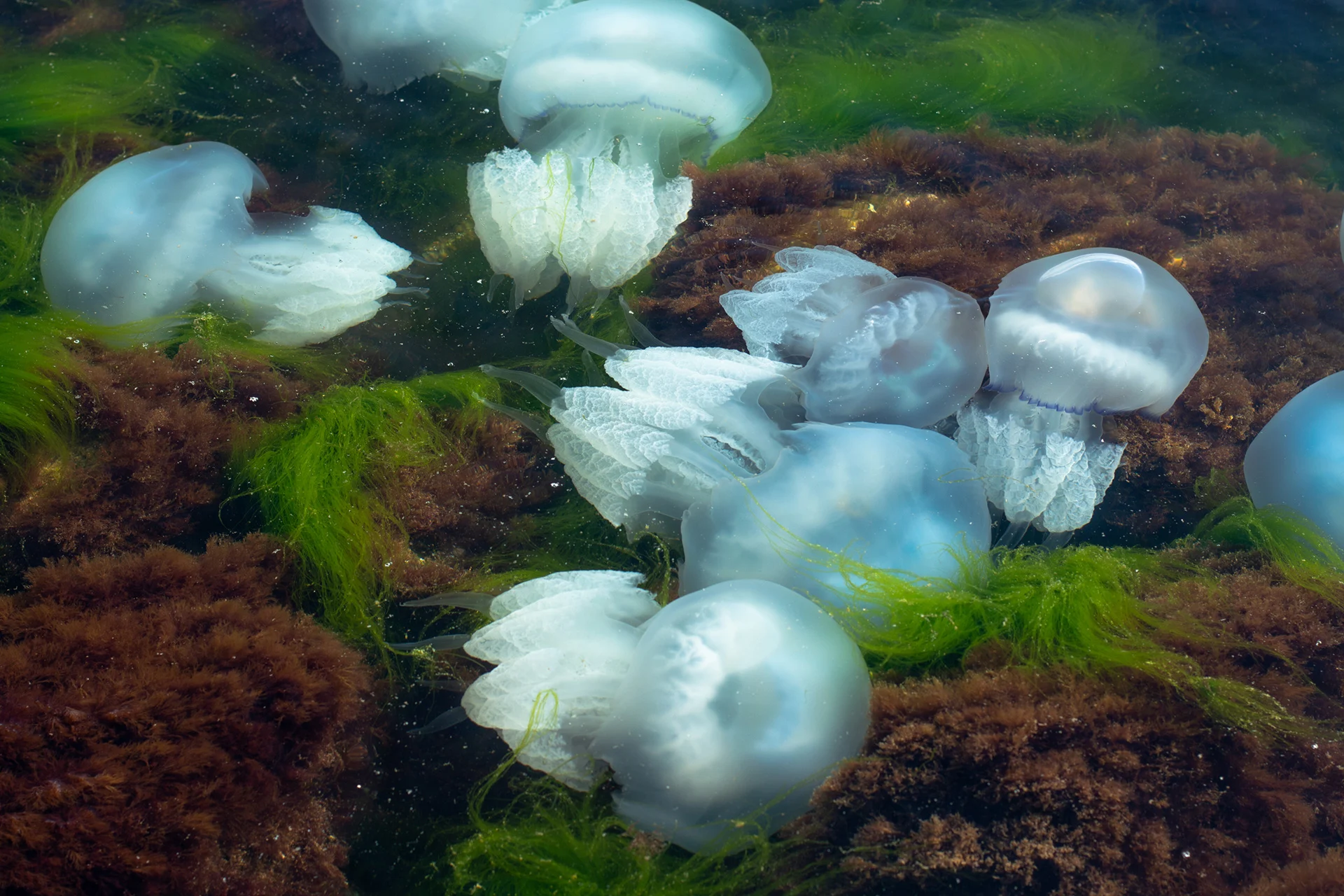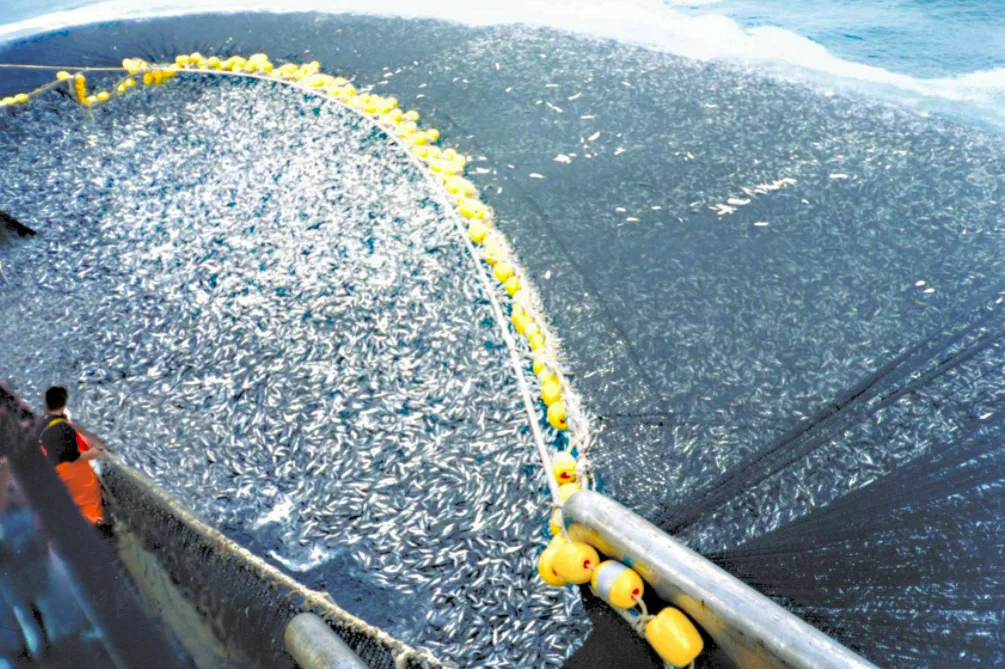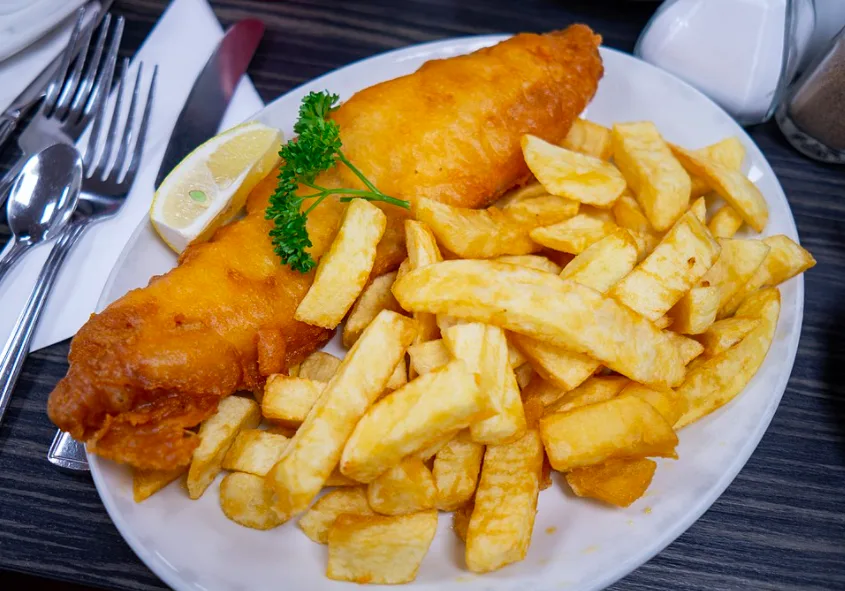
Jellyfish should become the next popular seafood, researchers say
Marine scientists say that embracing unconventional seafood sources can alleviate pressure on overfished stocks and help improve biodiversity levels in oceans.
Can you picture jellyfish and a side of chips becoming your go-to order in the next few years? It might seem strange now, but scientists say that increased consumption of jellyfish and other atypical marine species could significantly improve biodiversity levels and sustainable commitments in the fisheries industry.
The Food and Agriculture Organization of the United Nations (FAO) projects that a global population of 9 billion people by 2050 will increasingly rely on fish as a food source, which will put pressure on the sustainability of the aquaculture industry. Several marine species, such as haddock, are vulnerable to extinction, but are still caught in global fisheries and widely consumed.
The primary driver of plummeting marine biodiversity is global fisheries and one-third of fished stocks are exploited at biologically unsustainable levels, as stated by a study published by researchers from the University of Queensland. Their research revealed that 92 globally threatened species appeared in industrial fisheries catch records between 2006-2014. Eleven of these species are Critically Endangered, 20 are Endangered, and 60 were Vulnerable, according to the International Union for Conservation of Nature’s Red List of Threatened Species (ICUN Red List).

A trawler reeling in a fishing net with thousands of cod fish, an example of overfishing. Credit: Wikimedia Commons
The Red List is “the world’s most comprehensive information source on the global conservation status of animal, fungi and plant species.” Scientists and policymakers use this list as a reference for the status of species and as a source of information when creating rules and regulations that could impact living organisms in nature.
Despite global efforts that work to identify and protect marine fish species, the researchers say that these animals are treated differently than terrestrial animals and in many cases are permitted to be caught in industrial fisheries. The catch data revealed that Spain, Portugal, and the U.S. caught the highest number of threatened species (43, 39, and 33 species, respectively) between 2006-2014 and 60 per cent of the countries with the highest volume and value of threatened species catch are European.
The researchers say that it is difficult to identify countries that are driving threatened species imports because of limited global seafood trade records. They also note that many wealthy nations import seafood from less stringent regulations of management capacity, which makes it difficult to trace what species have been caught and what fishing practices were used to catch it.
In addition to the extreme pressures from human activity, fish and other aquatic species are also suffering from warming temperatures. Since the 1970s, the oceans have absorbed more than 93 per cent of the excess heat that human-released greenhouse gas emissions have caused, which is contributing to more frequent and deadly marine heat waves.
“Climate change impacts will exacerbate pressures on threatened fish and invertebrates through warming waters, acidification, and loss of critical habitat and prey availability,” the study warns.
WHAT TYPE OF FISH ARE YOU ACTUALLY EATING?
Leslie Roberson, University of Queensland Centre for Biodiversity and Conservation Science PhD candidate, says that it is legal for people to fish species that are threatened with extinction and that seafood species does not have to be labelled.
The researchers found that Haddock, Atlantic horse mackerel, and bigeye tuna accounted for 76 per cent of threatened species catch volume. “This means that the ‘fish’, ‘flake’ or ‘cod’ that Australians typically order at the fish and chip shop could be critically endangered," Roberson said.

Credit: Matthias Meckel/Wikimedia Commons
The study identified several reasons why vulnerable fish species are not properly protected. Firstly, the magnitude and extent of exploitation are not well understood on a global scale since fisheries often only manage individual stocks or populations. The small-scale nature of certain stocks is also cited as a reason why global conservation statuses of certain species are overlooked.
While certain populations of globally threatened species can theoretically be fished sustainably, the seafood supply chain structure makes it challenging for consumers to make informed, sustainable selections.
To promote sustainable seafood consumerism, the researchers have created three tips that can inform shoppers: know what species you are buying, know where the species was caught, and know how it was caught. This information can then be referenced to a sustainable seafood guide, such as SeaChoice by Living Oceans or the Good Fish Guide by Marine Conservation Society.

